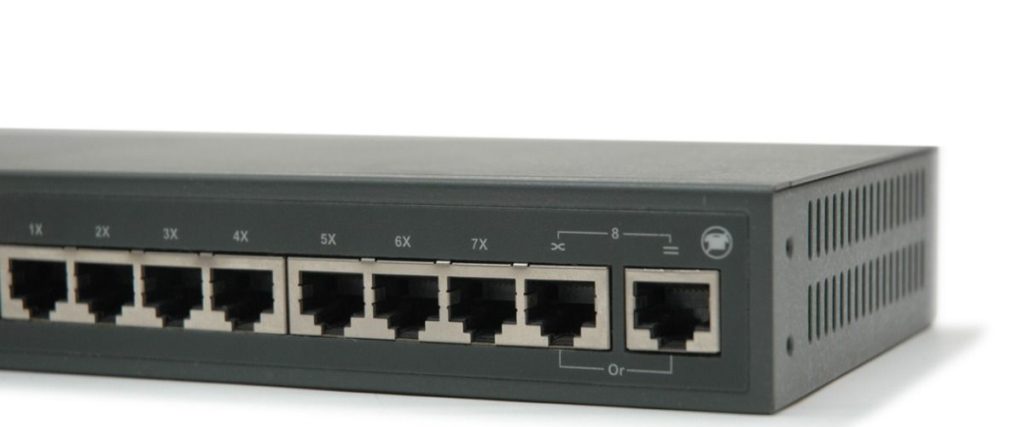As most people know, internet traffic exploded during the global pandemic. The internet is now a critical part of day-to-day living and the digitization of our lives has crystallized the importance of internet access. As a testament to this, countries worldwide are focused on providing internet access to all citizens and allocating large sums of money to make it happen.
With the growth in internet users and the insatiable demand for bandwidth, broadband providers are re-evaluating their networks to ensure they can accommodate this growth.
In this environment, market research firm 650 Group has predicted the disaggregated router market will grow in excess of 50% per year over the next five years.
Let’s look at a few reasons why.
Traditional ASIC-Based Routers
ASIC-based routers have been a key part of traditional network architectures. An application-specific integrated circuit (ASIC) is customized for a specific use, rather than created for general-purpose use. The integration of several different circuits (all on one ASIC chip) enable it to be custom programmed to combine several related functions, which together perform a specific overall task.
ASIC Router Challenges

Traditional ASIC routers include proprietary hardware and software packaged together from a single vendor, such as Cisco and Juniper. While proprietary hardware/software solutions bundled together ensure interoperability and a single point of contact, they also create significant challenges.
For starters, proprietary routers create vendor lock-in. And vendor lock-in (which eliminates competition) increases costs. Vendor lock-in also prevents broadband providers from choosing best-of-breed hardware and software solutions independently. Innovation is also limited by a single-vendor solution, since there is no access to a robust ecosystem of software and hardware vendors.
ASICs also have a very, very long development lifecycle. Since the next iteration cycle may be many years away, legacy router manufacturers typically put all possible features into their ASICs. Of course, combining all potential features into one ASIC chip translates into high costs. This also means broadband providers may be paying for features they don’t want or need.
Network planning can also be adversely affected. Given the high upfront costs of ASIC routers, broadband providers may decide to limit their capital expenses by purchasing an ASIC router that will only meet today’s capacity requirements. However, this router may have to be replaced as network traffic increases.
The other option is to purchase an ASIC router that has more capacity than needed today, in order to meet future capacity requirements. Unfortunately, this will result in higher upfront capital costs (over-provisioning) and leave significant capacity unused. The bottom line is overprovisioning network infrastructure can lead to unnecessary costs, while under-provisioning network infrastructure can lead to poor performance.
Disaggregated Routers
At its most basic level, disaggregated routing separates router software and hardware. This enables service providers to select the software and hardware that best meets their needs from a variety of vendors.
These open networking solutions typically run on commodity x86 servers, which provide greater flexibility and lower costs compared to proprietary ASIC-based solutions.
As a result, more and more broadband providers are looking at disaggregated routers and their many benefits, including:
Greater Agility and Scalability

Disaggregated routers are designed to counter the inflexibility (and high costs) of traditional network routers by decoupling network functions from proprietary hardware appliances. With networking resources separated from the physical infrastructure, you don’t have to purchase additional hardware appliances every time you need additional network capacity. You can quickly add network capacity with a few simple software commands.
Bottom line, changes can be made significantly faster. And this makes it much easier to keep pace with network demands from an expanding subscriber base.
Avoid Vendor Lock-In
Traditional ASIC Routers are bundled solutions that include all potential features for every use case, so service providers are typically stuck with many features they don’t want. In contrast, disaggregated routers enable broadband providers to choose only the features they need. If other features are required, they’re easy to add for modest costs.
Access to an open ecosystem of software and hardware vendors can also provide solutions from best-of-breed vendors, each with their own domain expertise. Using standard white-box servers also makes these solutions easy and inexpensive to integrate.
Bundled systems from legacy router manufacturers result in a vendor-customer relationship strongly biased in favor of the vendor. Disaggregated routers give back choice and control to broadband providers.
Lower TCO

For many broadband providers, the most compelling reason to adopt disaggregated routers is simple: Lower Costs.
Disaggregated routers are designed to deliver the lowest TCO. They accomplish this by:
- Unbundling router software and hardware
- Eliminating high margins enjoyed by traditional router manufacturers
- Replacing inflexible ASIC routers with software-based routers that are easy to scale
- Removes the need to continuously upgrade network infrastructure
- Using commodity, low cost white-box servers instead of costly proprietary hardware
- Opening up competition between vendors (which naturally lowers costs)
- Providing flexible pricing
Legacy router price lists are often vast price books with numerous options and configurations. Disaggregated routers replace this with simple and flexible pricing and licensing, which helps lower overall costs.
The Future of Disaggregated Routers
Again, it’s been predicted the disaggregated router market will grow in excess of 50% per year over the next five years. With the New Year upon us, this may be a good time to look more closely at disaggregated routers.
To learn more, please read the netElastic white paper on Next Generation Routers: Is Your Broadband Network Ready?

